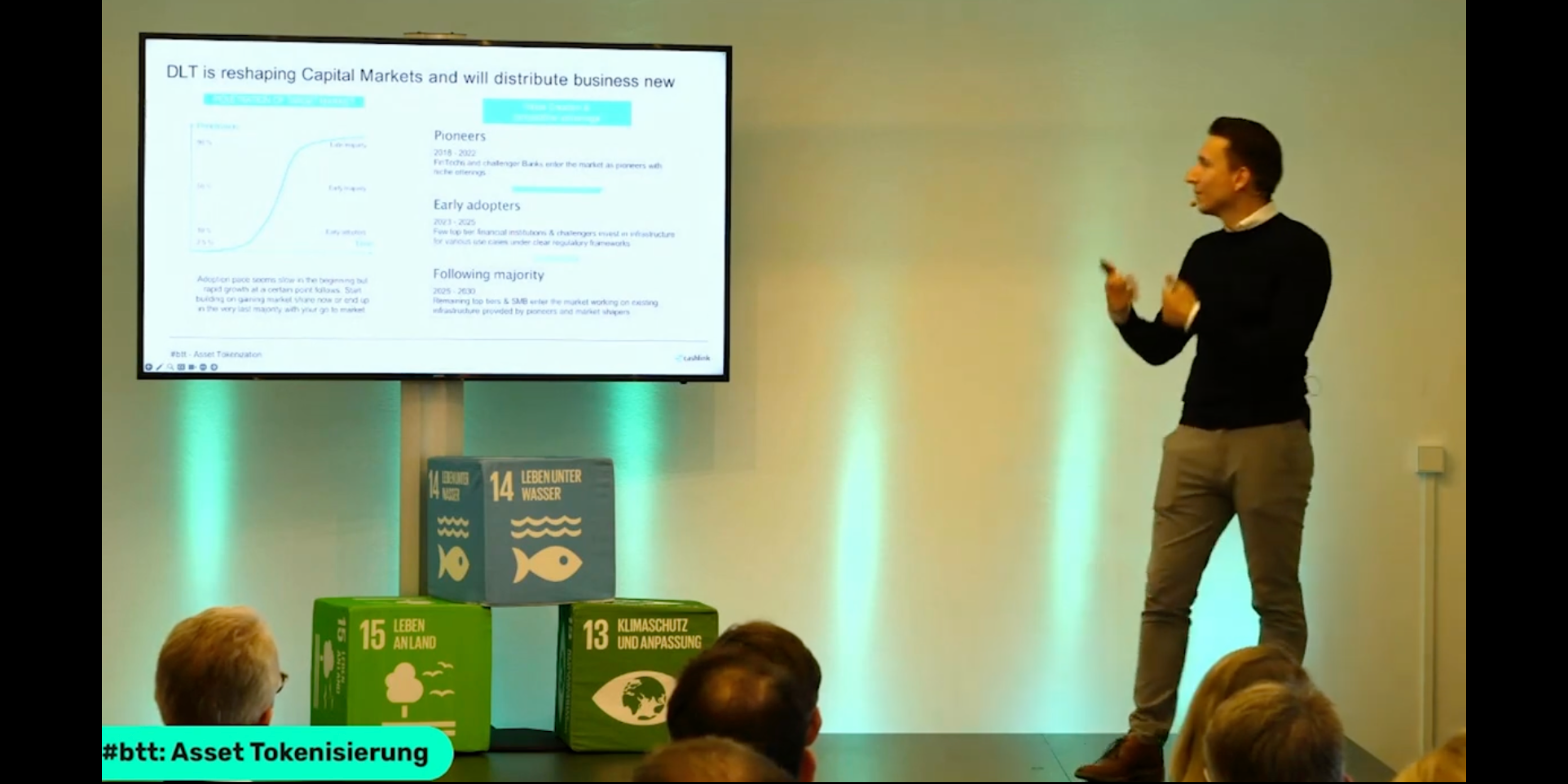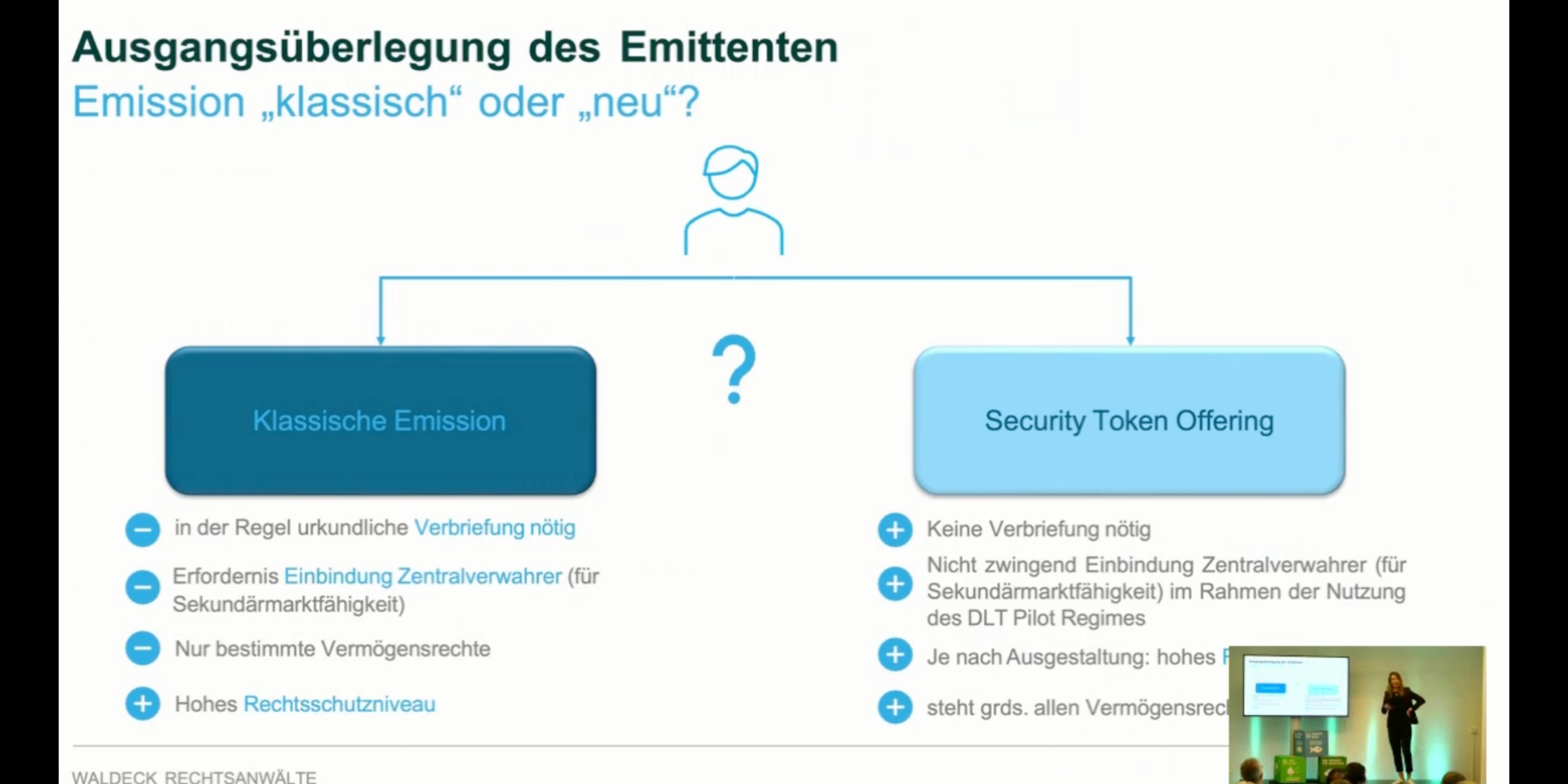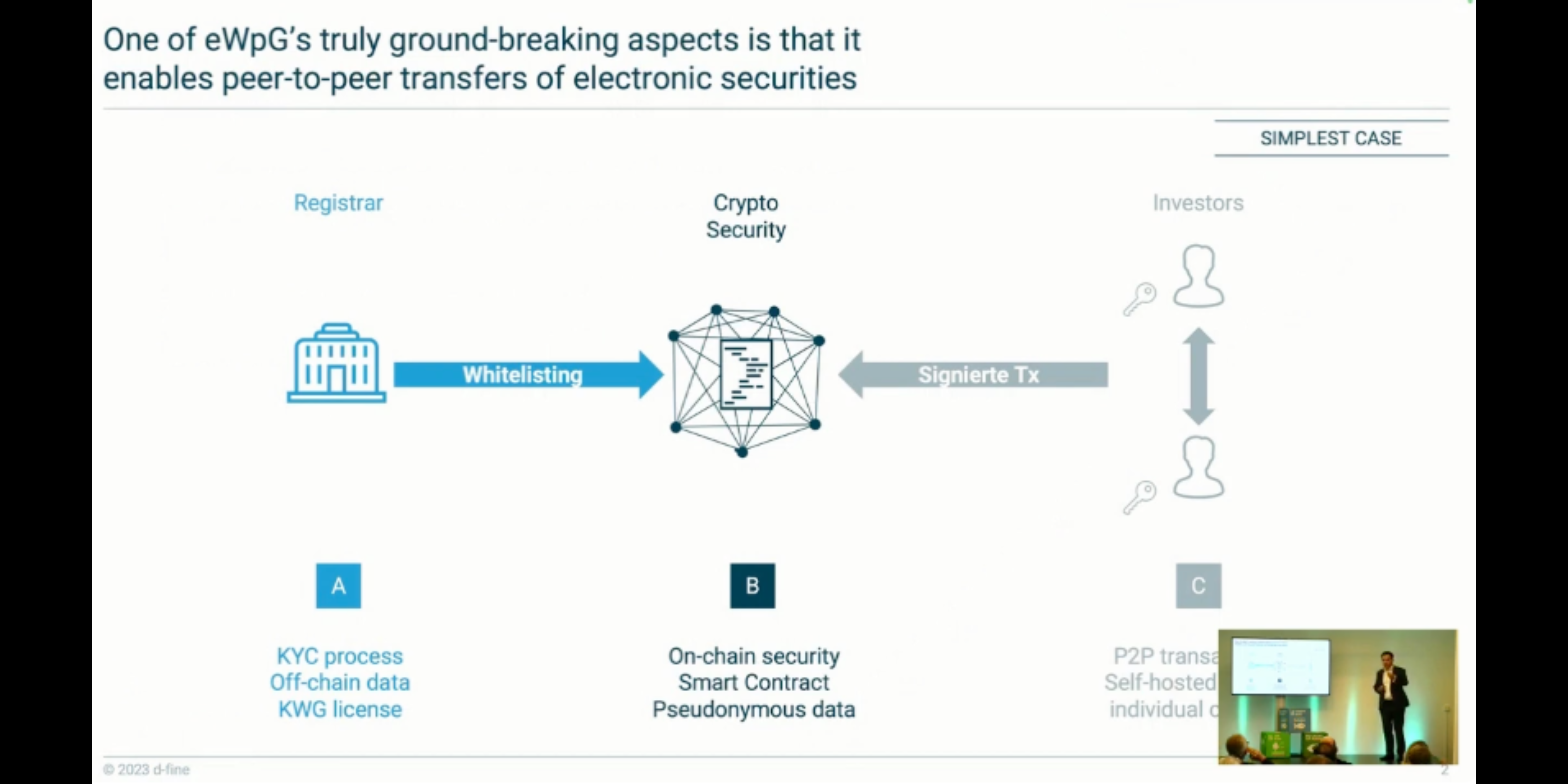Victoria Jahn, lawyer at Waldeck Rechtsanwälte, provided us with comprehensive information on the regulation of tokenization in the second presentation of the evening. She answered questions such as:
- What are the requirements for tokenization?
- What legal framework conditions apply?
- What regulatory hurdles need to be overcome?
It pays particular attention to the opportunities offered by Security Token Offering (STO). This is a method of raising capital that is becoming increasingly important as it supplements and in some cases replaces traditional financing methods.
She also explains how regulation changes depending on the issue and type of tokenization. Another important question concerns the regimes under which tokens are to be brought to market. In the case of electronic securities, a distinction is made between crypto securities, central register securities and crypto fund shares.






